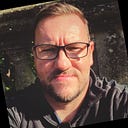Lauf an der Pegnitz & Fürth, Germany
As the second-largest city in Bavaria after Munich, Nuremberg had excellent train connections and made an opportune base to explore the area. I used my Deutsche Bahn app again and bought an all-day transportation pass to visit two interesting towns I’d researched along the Pegnitz River.
First up was Lauf an der Pegnitz. Some German towns formally add the river they’re on to their names to distinguish themselves from other towns with the same name. Thus, this was the Lauf on the Pegnitz River. The town I lived in when I worked over here, Esslingen, did the same with “am Neckar”.
After arriving at the train station, I hiked a short distance to the middle of town. The Marktplatz (market square) was surrounded by handsome buildings with the old Rathaus (city hall) right in the middle. As is often the case, stalls were set up in the square and vendors were selling fresh produce, flowers, beer and brats.
As an alternative to expensive sit-down meals, Germany offers fantastic street food. One of my favorite ways to have lunch on the go is to order a freshly-grilled brat with spicy mustard on a roll and pair it with the local beer. Lauf delivered and I joined the locals munching at the standing tables.
Lauf was compact and easy to explore. A few interesting streets fanned off from the Marktplatz but essentially, everything I came to see was clustered together in the middle.
I especially enjoy visiting a town with an active market because the locals are out shopping and you can blend in as you watch a normal day for them unfold. Kids played in the fountain, cried when they dropped their ice cream cones and happily chatted away with their friends. For some reason, hearing kids speaking German really drives home I’m in another country.
After I’d circled the compact town center on foot, investigated the obligatory church and watched the wooden wheel at the old mill spinning in the river, I headed back to the station. Trains ran often to Nuremberg from here and it wasn’t long before I was headed back west.
On a whim, I decided to jump off at a suburban station near the… Dokumentationszentrum Reichsparteitagsgelände (long words for the museum near the former Nazi rally grounds). I’d visited this area on earlier trips but I’d heard the German government was funding repairs and educational enhancements to the site after leaving it to languish for years.
This is where Hitler and other party leaders gathered with thousands of supporters to hold annual rallies here in Nuremberg. In the 1930s, huge limestone-faced grandstands were quickly constructed around the old Zeppelinfeld to hold massive Nazi spectacles.
After the Americans took control of the area in 1945, the stone swastika on top of the central grandstand where Hitler once held sway over the nation was ceremoniously blown up. This act firmly communicated the final defeat and destruction of Nazism.
Today, the remaining structures are decrepit and pose a danger to visitors. Newly-installed metal signage around the area had added much-needed context and also explained steps the government was taking to ensure future generations could come here to learn important lessons about the past.
A bit removed from the rally grounds, a building designed by Nazi architect Albert Speer served as a power substation to the complex. It somehow escaped any damage during the war. In fact, it may have been one of the most pristine examples of architecture from the Nazi era remaining.
I was surprised to see the shadowy outline of a Nazi eagle and swastika wreath still clearly visible on the facade of the structure. I was even more surprised to learn that a Burger King now occupied the building. Perhaps it’s ultimately fitting that an American fast-food burger chain operated out of a place associated with the infamous vegetarian Adolf Hitler. Fitting indeed.
Back on the train, I headed west of Nuremberg to explore the pretty town of Fürth. It somehow escaped widespread bombing during the war and maintained an atmospheric old quarter. As evening approached, locals crowded on sidewalks and squares outside restaurants for dinner.
I carefully threaded my way through tables and found a quiet spot behind a flock of bicycles to snap a few photos. Fürth celebrated its thousand year anniversary in 2007. Throughout the Cold War, the city had a significant NATO presence, especially the U.S. Army, due to its proximity to both the East German and Czechoslovak borders.
Unique to Germany, the Fürth coat of arms depicted a green trefoil three-leaved clover. The symbol and the color green were integrated in spots all over town, imbuing the place with a hint of the Irish.
Near the church, I examined a curious monument which depicted a local cleric ministering to what appeared to be Native Americans. I’ll have to do more research on this one…
Smaller towns afford you the opportunity to get closer to regular life in Germany. I enjoyed looking over the homes, schools and businesses as well as the always-interesting German transportation scene.
I like to see photos of cities and grand landscapes but I believe God is in the details. These objects quietly share stories and lessons from the past if you just take the time to listen.
……….
Thanks for coming along on the trip. If you have questions or suggestions, tweet @JasonRMatheson. Missed an entry? Click here.
